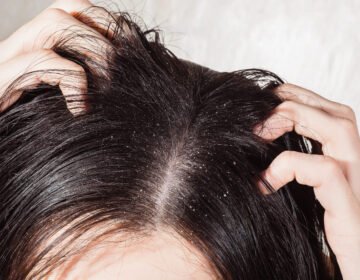
FUE hair transplant – everything you need to know
What is an FUE hair transplant?
Follicular unit extraction (FUE) hair transplant is achieved by taking person hair follicles from your pores and skin and implanting them someplace else for your frame. This will make the hair withinside the new place appearance thicker.
FUE changed into intended to update the “classic” follicular unit transplantation (FUT) technique. This process changed into achieved through taking a whole piece of pores and skin or scalp in conjunction with the follicles and transplanting the pores and skin at the goal place.
FUE has ended up extra famous than FUT because it’s much less in all likelihood to result in a “hair plug” appearance, in which sections of pores and skin or hair don’t shape the encircling regions. It additionally won’t go away; a massive scar-like FUT does.
The first-class candidate for an FUE hair transplant is a person with thinning hair or balding who has fine hair close by to apply for a transplant.
You might not be eligible for an FUE hair transplant if you don’t have sufficient healthy or thick hair to transplant to the thinning or balding place.
How much does an FUE hair transplant cost?
An FUE hair transplant charges between $4000 and $15,000 in keeping with a consultation. A multiple-consultation process might cost a little up to $50,000 or extra.
The final price of an FUE hair transplant relies upon on:
- how a whole lot of hair is extracted and transplanted
- what number of surgeons are to be for your place to do that process
- how often your general practitioner can carry out FUE hair transplants
- how skilled or in-call for your general practitioner is
You’ll, in all likelihood, want to pay for an FUE hair transplant out of pocket due to the fact maximum medical insurance plans don’t cowl beauty techniques like this.
You’ll also want to cowl prescription medicinal drugs for ache or different viable aspect results from the process.
You ought to aspect in time without work paintings for healing whilst thinking about the price. This can imply three to four days at home. Most organizations don’t cowl hair transplants beneath neath clinical go away policies.
How does an FUE hair transplant work?
As you get older, the three-section cycle of hair boom and regrowth shortens till follicles now not regrow hairs. This system is specific for everyone. Some human beings begin balding in their 20s, whilst others bald a whole lot later in life.
FUE hair transplants repair hair by changing those antique follicles with new ones, which might be capable of developing hair.
After the transplant, the follicles might be nourished through blood vessels and start developing hair withinside the place that formerly had thin hair or balding.
Procedure for FUE hair transplant
Here’s how the FUE process works:
- Your general practitioner will shave down the hair within the place in which follicles might be eliminated and across the transplant place.
- Using a micro punch device, they’ll do away with follicles out of your pores and skin.
- Your general practitioner will then make a sequence of tiny incisions with a needle or different small, sharp devices in which the extracted follicles might be inserted.
- They’ll insert the follicles into the incisions.
- Your general practitioner will smooth and bandage the place for healing.
Targeted regions for treatment
FUE hair transplants are maximum typically done at the scalp.
They also can be achieved someplace else for your frame in which hair is skinny or absent. FUE may be performed for your arms, legs, or even your genital place.
Are there any dangers or aspect results?
You won’t enjoy any scars from an FUE hair transplant apart from tiny white dots in which follicles had been taken out. These may also fade over time.
See your medical doctor in case you word any of the following uncommon aspect results:
- contamination symptoms
- drainage or crust in which the surgical treatment changed into achieved
- ache or swelling across the surgical treatment site
- follicle swelling (folliculitis)
- bleeding from the surgical treatment site
- numbness or tingling close to the surgical treatment site
- transplanted hair that doesn’t seem like the hair around it
- balding or thinning keeps even after the transplant
What to anticipate after an FUE hair transplant
Recovery from FUE is quick. You may also have a few swelling or soreness for approximately three days.
Here is a few aftercare commands your medical doctor may also provide you:
- Don’t wash your hair or bathe for at least three days.
- Use gentle, unscented shampoos for some weeks after you begin cleaning your hair.
- Take more than one day off work to assist restoration.
- Don’t comb or brush your new hair for at least three weeks.
- Please don’t put on hats, beanies, or different garb that goes over your head until your medical doctor says it’s OK.
- Don’t do any strenuous bodily hobby for at least a week.
Some hairs may also fall out at some point in the restoration system. This is normal. You’ll possibly begin to word a distinction after three to four months.
Depending on the fitness of your transplanted hair, your hair might not develop again as thick as expected.
Preparing for an FUE hair transplant
Here are a few matters you can want to do earlier than getting an FUE hair transplant:
- Don’t smoke for at least an afternoon earlier than your surgical treatment.
- Don’t drink alcohol for at least three days earlier than your surgical treatment.
- Try to keep away from taking antidepressants for approximately two weeks earlier than surgical treatment.
- Don’t take aspirin or blood thinners for approximately two weeks earlier than your surgical treatment.
- Don’t take any nutrients or nutritional dietary supplements for two weeks earlier than your surgical treatment.
- Take any medicinal drugs, consisting of minoxidil (Rogaine), that your general practitioner asks you to take.
- Don’t get your hair reduced earlier than the surgical treatment.
- Do a scalp rubdown for 10 to half-hour each day for some weeks to grow blood waft for your scalp.
- Have an electrocardiogram (ECG), and blood exams achieved earlier than surgical treatment.
How to find a provider
Try the International Society of Hair Restoration Surgery’s (ISHRS) Find a Doctor device to find a health practitioner who makes a speciality of hair healing close to you.
You also can use the listing at the American Board of Hair Restoration Surgery’s (ABHRS) internet site to discover a medical doctor who’s licensed in hair healing primarily based totally on the rigorous standards of the ABHRS.















